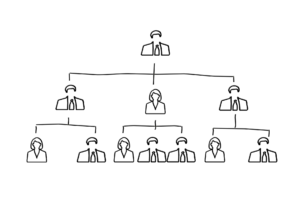Complete Guide to Donor Survey Best Practices and Question Ideas
How to Acquire Survey Data that Strengthens Your Fundraising and Communications
 At the 2019 AFP Forum for Strategic Fundraising in Bellevue, Washington, Ariel Glassman from The Ostara Group led an outstanding presentation about donor survey best practices.
At the 2019 AFP Forum for Strategic Fundraising in Bellevue, Washington, Ariel Glassman from The Ostara Group led an outstanding presentation about donor survey best practices.
She, along with the executive director from Kirkland Performance Center, covered everything from designing donor surveys, tools for delivery, types of survey questions, segmentation, and much more.
I found it one of the most practical and applicable sessions at the two-day event because nearly every nonprofit can derive great value from donor surveys.
Here’s a brief recap of the donor survey best practices, types of questions, tools, and more from Ariel’s presentation, followed by a related topic she didn’t address that will help you maximize your number of survey responses.
Set Aside 6-8 Weeks for Your Donor Survey Process
You’ll need to devote a couple weeks each to designing, deploying, and analyzing your donor survey. So in total, the donor survey process will take six to eight weeks.
In the Design phase, you must determine things like:
- – Who to send your donor survey to
- – What you expect and want to learn
- – The knowledge gaps you hope to fill
- – Which tools you’ll use to distribute your survey
- – How you will segment your survey
- – What survey questions you’ll ask
Taking time to clarify each of these points will produce a more effective survey that delivers more insights you can use later, and that your recipients appreciate. When donors and supporters feel like you genuinely care about what they have to say, they will draw closer to your nonprofit. In this way, a donor survey acts as a marketing tool as much as an information source. Anything that strengthens the bond between you and your donors is a good thing.
Deploy Your Donor Survey
Once you have designed your survey, you must deploy it.
The key to deployment is to deliver it to the intended audience. This is where segmentation comes in, which will be addressed in a bit.
These surveys are best deployed via email, using survey tools such as Survey Monkey, Google Forms, SoGo Survey, and Survey Gizmo. Each has various advantages that you can look into once you start your survey planning process.

Image by Clker-Free-Vector-Images from Pixabay
Ariel also recommends making the survey anonymous. The point of this survey isn’t to increase personalization or inform future marketing to specific people. It’s to get to know your donors better, en masse, regarding specific topics. You want people to feel free to be honest and open, especially because you’ll be asking some personal questions about finances and other topics with potential privacy issues. Anonymity will increase response.
To increase response, you should send your survey multiple times. Since you’re using email, not everyone will see your first email.
Also, if your survey includes major donors, you should deliver theirs individually, not as part of the mass email to everyone else. It’s probably a good idea to call them beforehand and ask them to fill it out when they get the email. You should write a separate, personalized email to each major donor.
Donor Survey Segmentation Options
How you segment depends greatly upon what you want to learn and the specific nature of your nonprofit.
Your segments could be broken down by activities unique to your mission, for instance. If you have a run/walk, you could survey only people who have attended past run/walks.
Or, you could ask people which parts of your mission matter the most to them. I once received a survey from a nonprofit called Equality Now that did this. They listed seven branches of their work and asked which ones I cared the most about so they could tailor communication to me.

Image by Gerd Altmann from Pixabay
You can also segment by topics such as:
- – How much people have given
- – Whether they’ve given or not given
- – Where they’ve given (at live events, online only, direct mail only, combinations…)
- – Volunteers
- – Parents
- – Event attendees
- – Donor trip participants
As you may have inferred, the segment or segments you use depends heavily on what you want to learn. That’s why great attention must be given to your knowledge gaps in the Design phase.
Do you want to know why people who attend your events don’t seem to give at other times of the year? Then you would segment your survey to event attendees only.
Do you want to understand the motivations of your volunteers, and how many of them become donors? For that, you’ll send your survey only to volunteers. But you could segment it further into past and present volunteers. You might see shifting trends between these two groups.
Are you interested in how donor frequency correlates with household income, if at all? Now you’ll send your survey to all your donors.
The options are endless – who you send the survey to depends almost entirely on what you want to find out. This is one of the most crucial donor survey best practices to utilize.
Donor Survey Question Ideas
Your survey questions should be driven, once again, by the knowledge gaps you hope to fill and the insights you’re looking for.
Your questions should also connect with the recipient by clearly stating their relationship to your organization. For instance, if you’re sending a survey to volunteers, a question might read this way:
“As a volunteer for [name of nonprofit], what motivated you to get involved with us?”
Trying to understand the motivations of your survey recipients should be a primary goal of almost any nonprofit’s survey, because that’s how you’ll stay in touch with what they care about, as opposed to what you think they should care about.

Image by Anemone123 from Pixabay
What they care about is what matters if you want your future communications to hit home and keep them engaged.
Questions that get at these underlying motivations include:
- – When was the first time you volunteered for a nonprofit? Why?
- – What prompted you to give your first gift?
- – Why did you decide to start giving monthly?
- – If you could tell someone just one thing about [name of nonprofit’s] mission, what would you say?
- – Which part of the fundraising gala was your favorite? Why?
You also want to ask questions that reveal the capacity of your donors to give.
These questions ask about things like household income, their field of employment, the largest charitable gift they’ve ever given (to any nonprofit, not just yours), and how many other nonprofits they’re giving to.
You can gain incredible insights from these questions.
For instance, if you discover that a large portion of your donors make about $50,000 per year and give to an average of 5 nonprofits, that would explain why your big campaigns keep falling short.
Your survey should also ask basic demographic questions because these will allow you to extract deeper insights from your results. Which brings us to the final donor survey best practice:
Analyze Your Survey Results
Once your results have come in, you must devote time to analyzing them.
Look for patterns and surprises. Think about the meaning behind your new treasure trove of data. Consider ways you can use it to adopt new fundraising or engagement strategies or to adjust your current ones.
For instance, you might notice that your highest concentration of recurring donors makes between $75 – $100k. Does that mean you should put more effort into acquiring new recurring donors from that income range, or that you should increase your outreach to current donors who earn above and below that income range?
Suppose your donation page’s lowest suggested monthly giving amount is $50. If your survey data revealed hardly any recurring donors make below $75k per year, a reasonable strategic adjustment would be to try adding a couple of lower ones, like $20 and $35. In fact, studies have shown that monthly donors give a median average of $25 per month, whereas one-time donors average $50.
So if you’re lowest suggested donation amount is too high, your lower income would-be donors may feel dissuaded from giving monthly.
A properly designed and segmented donor survey can reveal insights like this, relating giving potential to actual behavior.
You may also draw connections between their relationship with your organization and their communication preferences. You might learn that different donor outreach strategies will be more effective for different demographics. You might learn something about who comes to your events year after year, and how many come just once, and why.
How to Motivate Donor Survey Response
One thing Ariel’s presentation didn’t address as much concerns how to incentivize higher survey response.
It’s pretty disheartening to spend weeks developing a survey and then only get a 3% response rate. Ideally, you can push it up at least to 10%, but 20-30% or even higher would be preferable.
Here are a few tips to motivate higher survey response rates:
Segment well, and be clear about this in your subject line and email
If your survey is only to volunteers, put that in your subject line: “Volunteer survey – we need to hear from you!”
Use a carrot
Offering free gift cards to every participant, or a drawing for one larger prize, will generally produce a higher response. To better connect your survey to your mission, you might also offer a group prize, such as ten winners who get to tour your facility or 100 winners who get invited to a special presentation or documentary. People like to win. Donors are people. So give them the opportunity to win something.
Use a deadline
Deadlines work. They just do. They work even better when you give a valid reason for the deadline. For a survey, this is easy. You need all the information by a certain date so you can process it all and use it to more effectively accomplish your nonprofit’s mission. Be crystal clear about this, and use BIG FONTS or bright colors to emphasize the deadline. Why? Because it works…
Connect the survey to your mission
By filling out this survey, remind your donors of the impact they will have. Show them how filling out this survey will help the beneficiaries of your nonprofit. This survey is a way everyone can make a difference, and it doesn’t require a donation. That pitch will appeal to non-donors especially.
Consider sending out the survey link on social media
You’ll reach more people if you use more channels. And social media is ‘free’ just like email is.
Donor Survey Best Practices Summary
Plan, plan, plan. Don’t just jump in and create a survey in a couple of hours. Spend time designing a survey based on what you want to learn, and the types of questions you think will enable you to learn it.
Then, segment your survey deployment appropriately, and develop a series of effective questions that will connect with the recipient.
Next, send it out multiple times over email (and perhaps social media), give it a deadline, and use a carrot to increase response.
Finally, spend time analyzing your survey data and use it to improve your strategic fundraising, donor outreach, volunteer engagement, or whatever other insights you gain from the specific goals and insights you were looking for.
Want more content? Get weekly nonprofit fundraising and copywriting tips, strategies, and motivations in the ProActive Insights newsletter.


